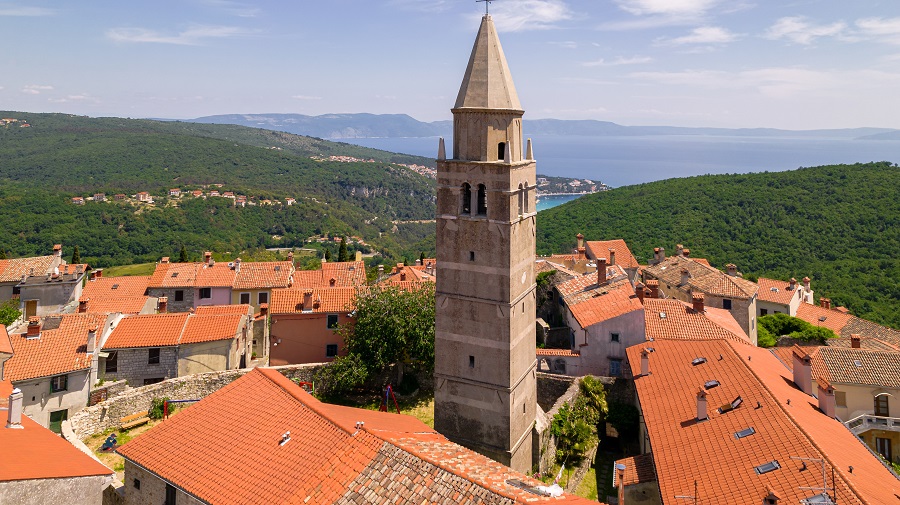August 15, 2023 – Continuing our tour of Istria after an excellent week in Terra Magica a few weeks ago, the charms of Labin and Rabac combine to serve a superb tourism cuvée.
There is a saying among American tourists visiting European cities – taking the ABC Tour. Another Bloody Cathedral. Going from amazing city to amazing city is a fabulous experience in that once-in-a-lifetime trip, but it can be exhausting and hard to get enthusiastic seeing yet another cathedral just as amazing as the last six.
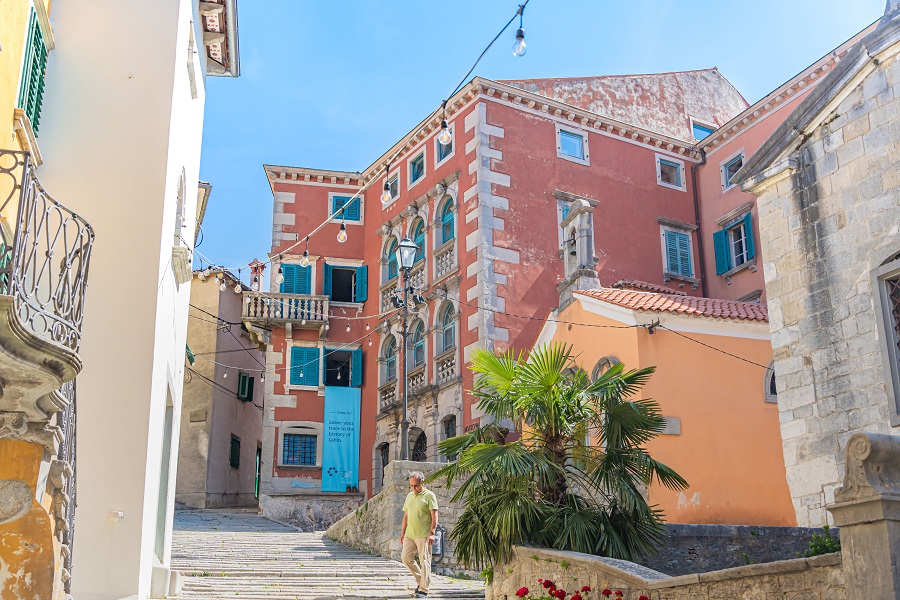
And so we return to our week-long tour of Istria a few weeks ago, which I dubbed taking the AIT Tour. Unlike the ABC Tour, it is impossible to get tired of the Amazing Istrian Town Tour, but after a week of being constantly being blown away by the likes of Vodnjan, Motovun, Groznjan, Porec, Rovinj, Buje, Bale and others, we came to our final stop of the 7-day trip – Labin and Rabac.
To be honest, our expectations were not that high, and our expectations had been exceeded all week, and we had half an eye on the road back to Zagreb.
And then we met the Istrian town which we both independently agreed was the most to our liking, and one which seemed to offer just a little extra in a very high-quality field.

First impressions always play a part, of course, and Labin Tourist Board Director Astrid Glavicic was there to meet us on the main square. As colourful and lively a character as the brightly painted facades which adorned the old town, we set off to explore.

I am not sure what it was – the narrower streets, the ubiquitous arty feel, the lack of cafes and restaurants in the old town which gave it a less touristy and more authentic and residential feel, the colours but we both LOVED Labin – our favourite old town of the week.
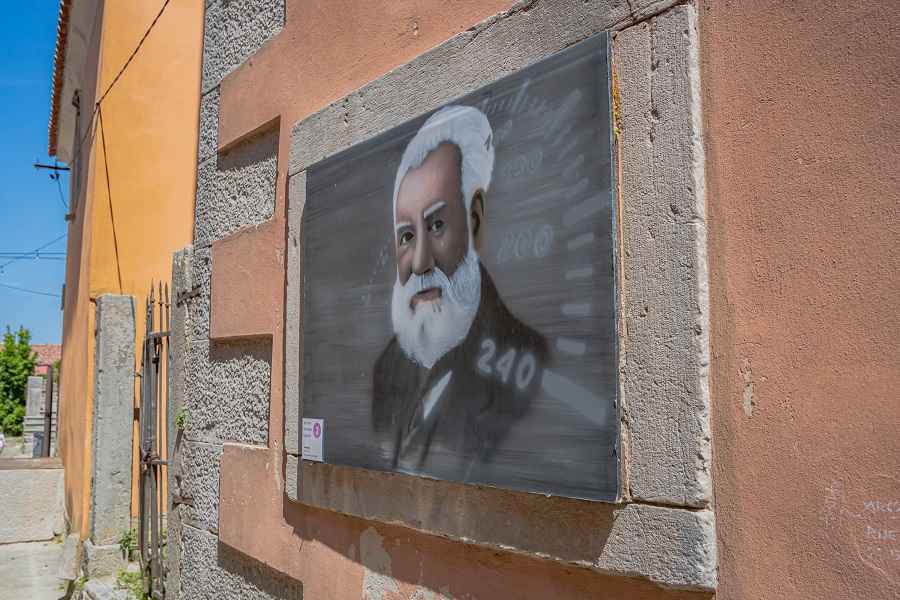
A town full of surprises…
From a full-on coal mine underneath the town…

… to Labin’s very own US Marshall.
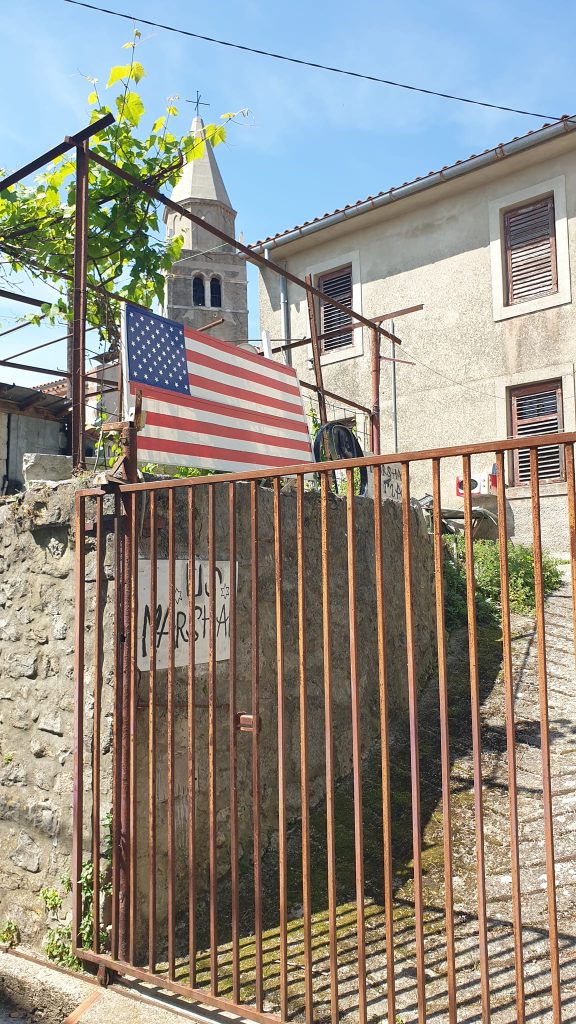
Rather than me try and do an injustice to the things to see and do in Labin, here are the top 5 from our Labin in a Page guide:
ART & HERITAGE
For a town of little over 10 thousand people, Labin has a respectable number of art projects and events. To begin with, there is Labin Art Express (LAE), contemporary art association established in 1991. It’s based in multimedia centre Lamparna, located in the old coal mine buildings. Its main aim is to preserve the abandoned mines by constructing a whole underground city beneath the ground. There should be bars, restaurants, galleries, concert halls, and the like, with its own government, literally underground. The project is not finished, but you can check out other ongoing LAE’s projects on their website. Another project of interest is the Labin Art Republic, held throughout July and August. During the Art Republic, the old town gets turned into a stage for concerts and plays, accompanied by exhibitions by local artists. Check out their Facebook page for more info.
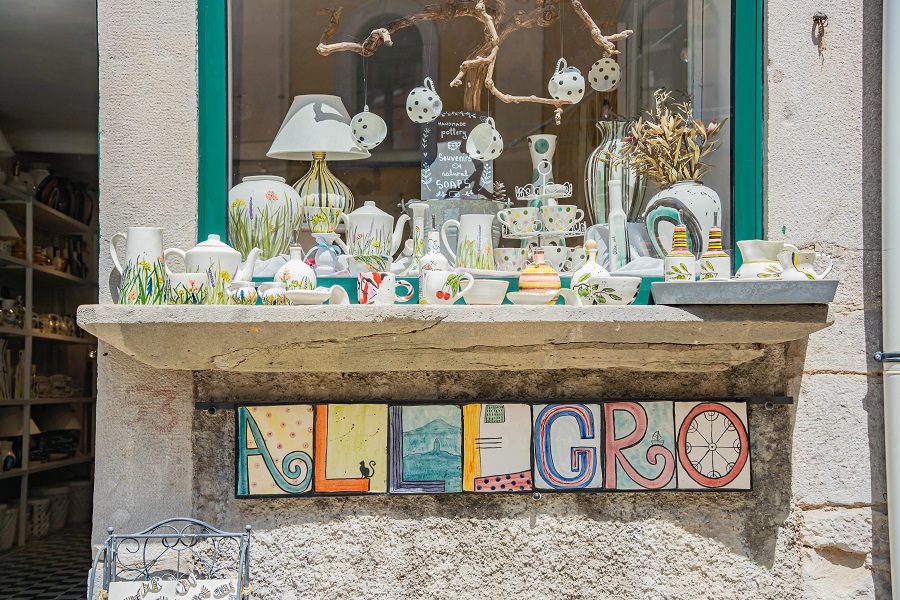
Still, the finest art project in Labin is easily the sculpture park Dubrova. It started in 1969, as the fruit of Mediteranski kiparski simpozij (Mediterranean Symposium of Sculpture), and still going. The project involves guest sculptors, mostly Croatian, but also from the entire world. They come to Labin every year and are given stone blocks brought from an Istrian quarry to chisel. The resulting works, about 80 of them, are on display in the 40-hectares park, located just outside of town.

Narodni muzej Labin (People’s Museum of Labin) is dedicated mostly to the town’s mining history and Labinska republika (see below). It includes a replica of the mining shaft.
LABINSKI KRAFI
Labin boasts a unique local delicacy, labinski krafi – nothing similar is found in Istria or Croatia. This pasta is similar to ravioli, but with a special filling made of cheese, vanilla, lemon zest, sugar, eggs, and rum-soaked raisins. Traditionally, it was eaten on special occasions and can work as both sweet and savory dish. That means that you can pair it with meat stew, or simply sprinkle it with some toasted breadcrumbs. It is relatively unknown even in Istria so Labin is almost the only place to try it and is available in most local restaurants.
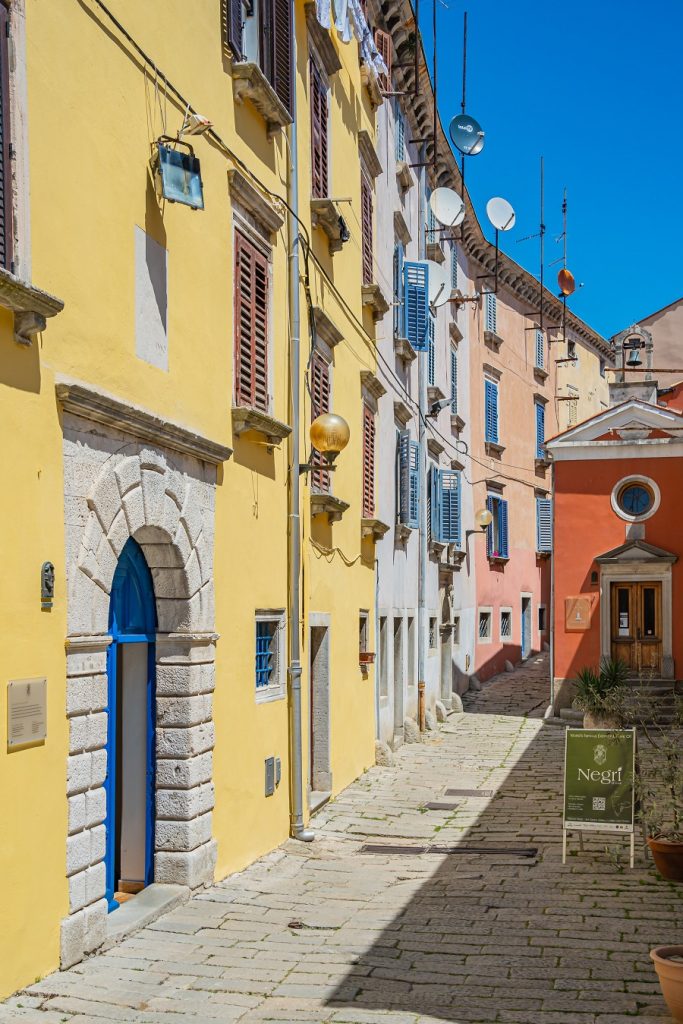
WALKS AND TREKKING
If you want to enjoy one of the most spectacular views in Istria, just climb to fortica, the highest part of the old town. Strolling from the old town to the charming local graveyard makes for another pleasant walk. A special treat is Sentona’s trail, named after Roman goddess of travellers. It leads from the old town to the nearby coastal town of Rabac, passing next to several streams and waterfalls. It isn’t nicknamed “Little Plitvice” for nothing! If you want to explore the inland, take the trail of Saint Barbara. It will take you to the nearby town of Raša, past an abandoned, but preserved coal mine shaft.
Several serious races take place around Labin: the biggest Croatian Ultra trail race “100 miles of Istria” starts here. In October, a series of races called “Valamar Trail” happens around Labin and Rabac, and the runners often say those are the most beautiful races around.
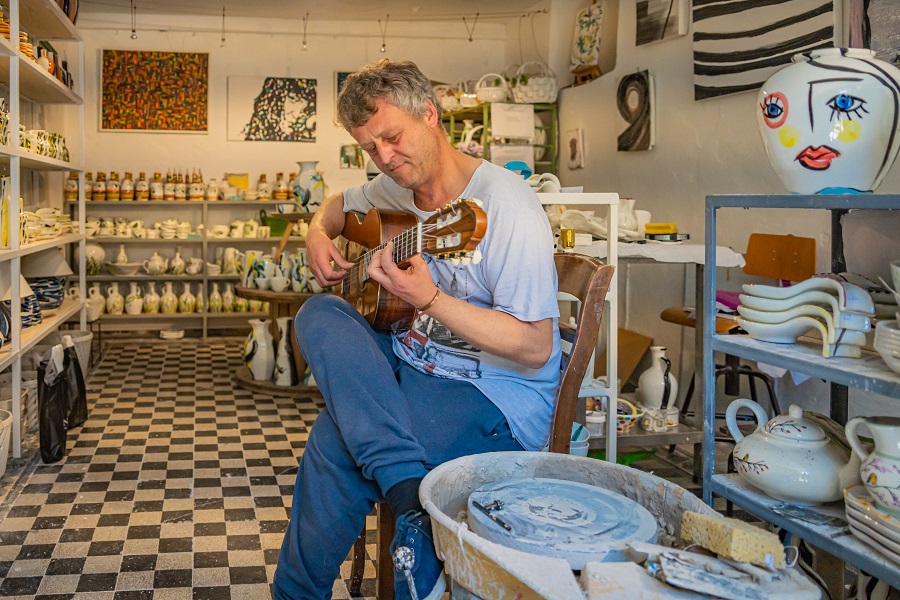
MODERNIST ARCHITECTURE
Old Labin is your typical medieval Istrian town. The new town – called Podlabin or, in Italian, Pozzo Littorio – is a fine example of modernist architecture. The Italian fascist regime, which ruled Istria with an iron fist until their capitulation, had an undeniable knack for architecture. Wanting to create perfect settlements for workers and managers of Labin’s coal mines, Mussolini’s government brought in top-notch architects to bring their ideals to life. New Labin was inaugurated in the early 40s, inspired by antique Roman castrums.
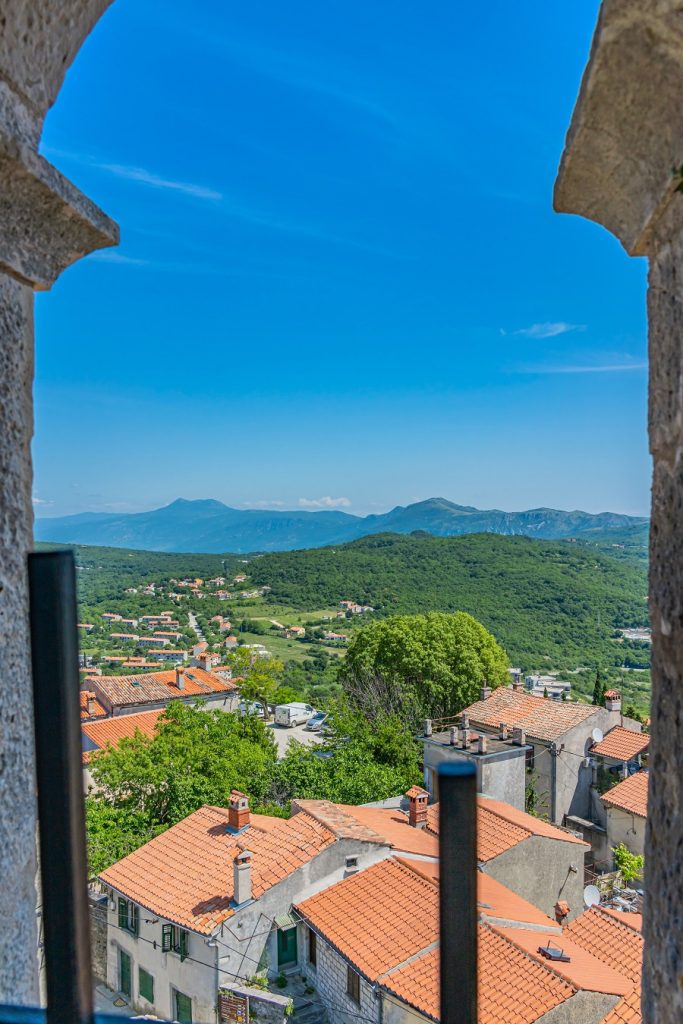
The idea was to have perfectly ordered streets organized around a central square, and simple, austere houses with an unmistakable Mediterranean touch. Rising above the town is the most recognizable local landmark, the šoht – local term for a headframe – which was recently refurbished after rusting for years, and now serves as a gathering point for the locals.

For more remains of failed regimes, visit the already mentioned town of Raša, located only 5 kilometers away from Labin, and accesible by foot (the aforementioned saint Barbara’s trail), another attempt at an utopian miners’ town, built a couple of years before Labin. Although the place lost much of it past splendor, it still makes for a worthwhile visit. The attractions are the church of saint Barbara, the patron saint of miners, built to resemble an upturned coal wagon, and the miners’ museum.
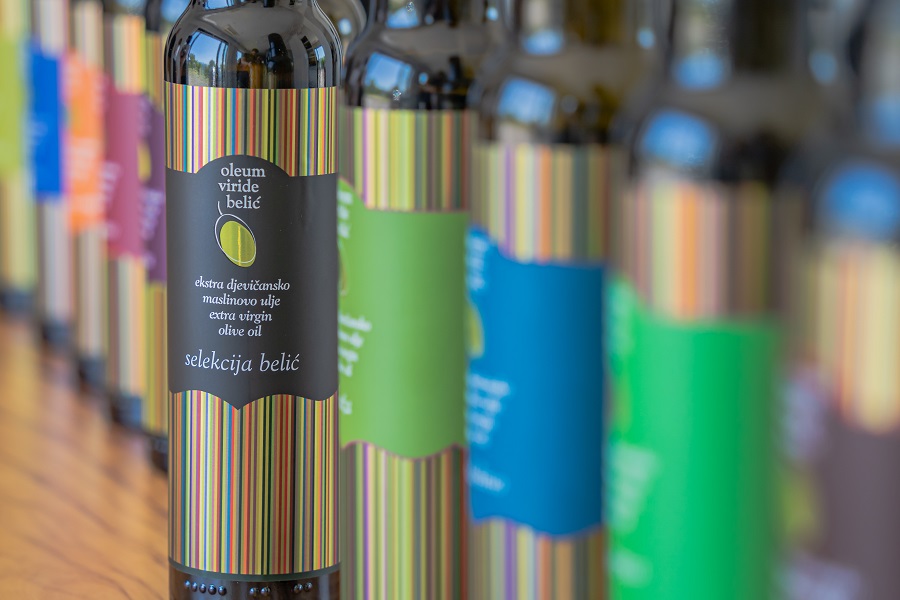
It was time for food… and drink. SO many people had told me that the best pizza in all Croatia was to be found in Labin. And so we found ourselves on the terrace of Bistro/Pizzeria Rumore (see below) – pretty bloody good, and it was not hard to realise where the reputation had come from.
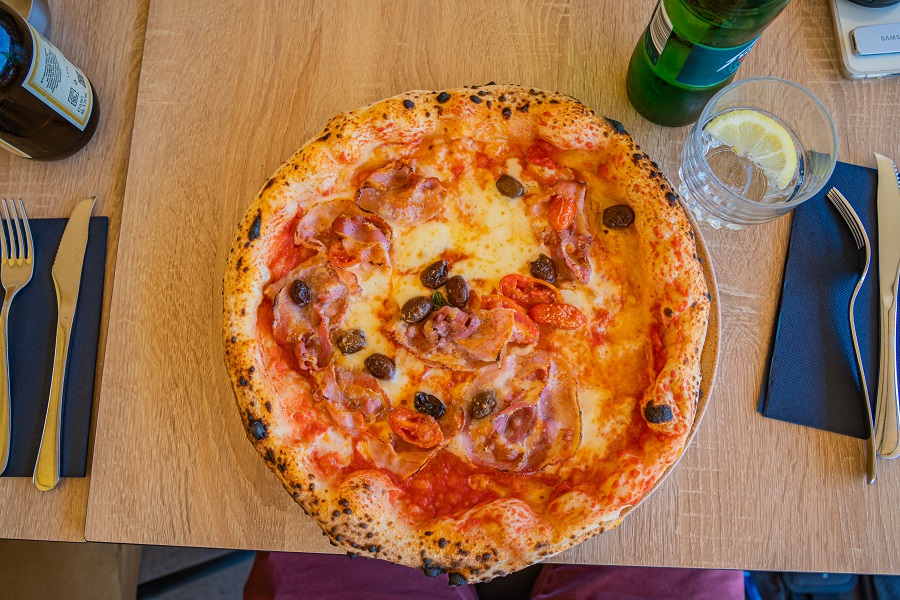
Conversation over lunch turned to wine and the strange ways Croats have of consuming wine. Having enjoyed the biklijada red wine and goat milk festival in Vrgorac last year (see video below – it really is nuts), I was curious to learn more about a local Istrian speciality called Istarska Supa, or Istrian soup.
One would normally have the soup before the pizza, but this is Istria, and a waiter was summoned and the order made. And this is like a soup you have never tried – Teran wine, olive oil, sugar, salt, pepper and toasted white bread.
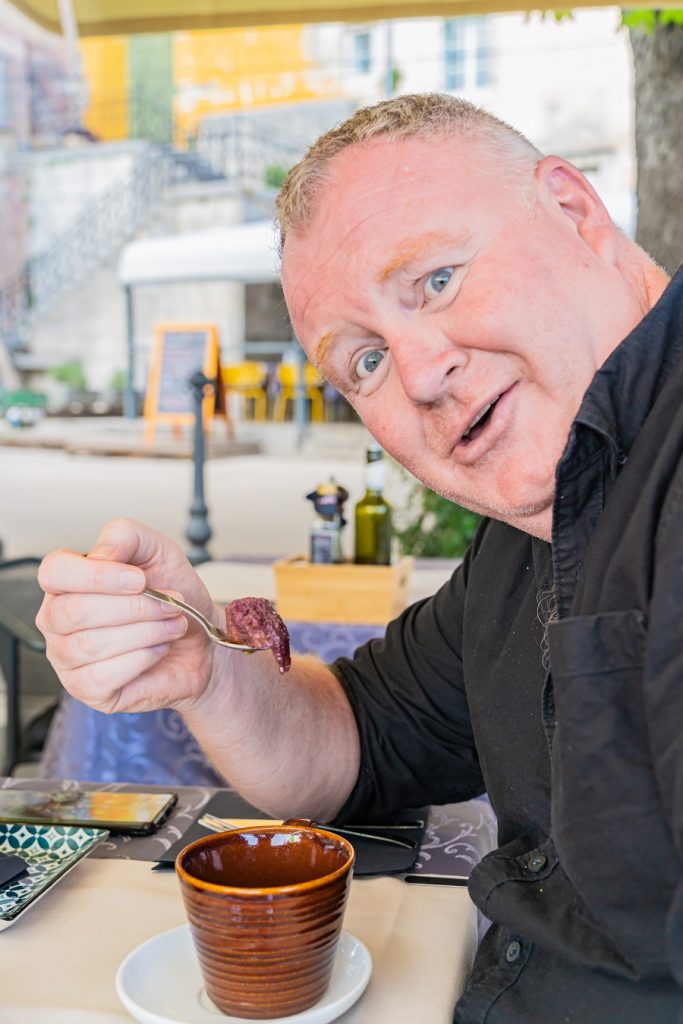
And before COVID, it was apparently drunk directly from the jug. A quirky brew, but actually quite nice.
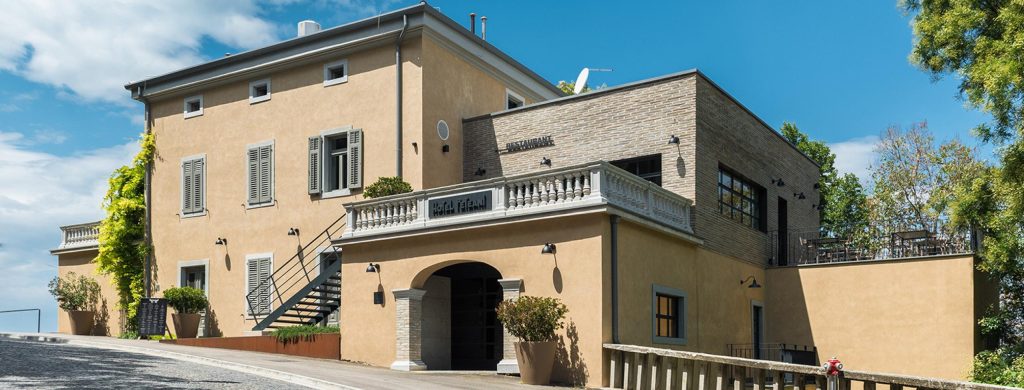
A word on the accommodation, which won the prize of comfiest bed of the week. I loved everything about my stay at the VERY cosy Hotel Peteani, and the terrace view over the town and valley over a wonderful steak dinner was the perfect end to an outstanding day.

But unlike all the other towns in inland Istria, Labin does not stop with the town itself, and there is a reason that the tourist board is called Labin and Rabac Tourist Board.
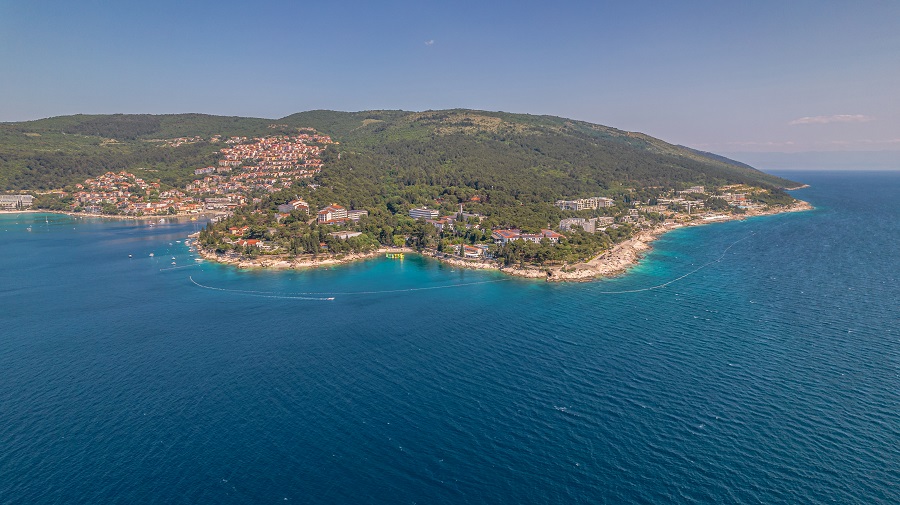
Just a few minutes from the heart of the old town and I felt I was back in Dalmatia. Rabac, an exquisite coastal town, with lively riva and excellent beaches – the perfect combination with historic old town living.
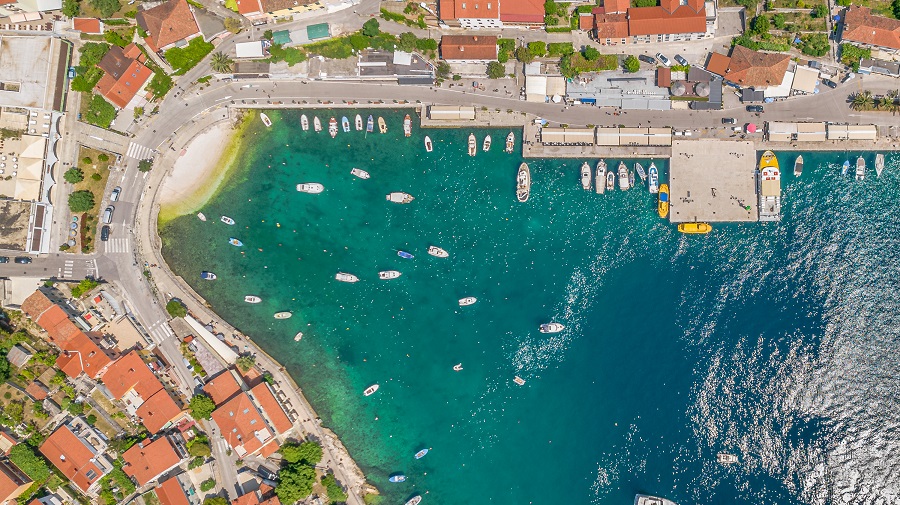
And, in a season dominated by the topic of pricing, it was nice to see the availability of a waterfront coffee for just 1 euro 20 (see below).
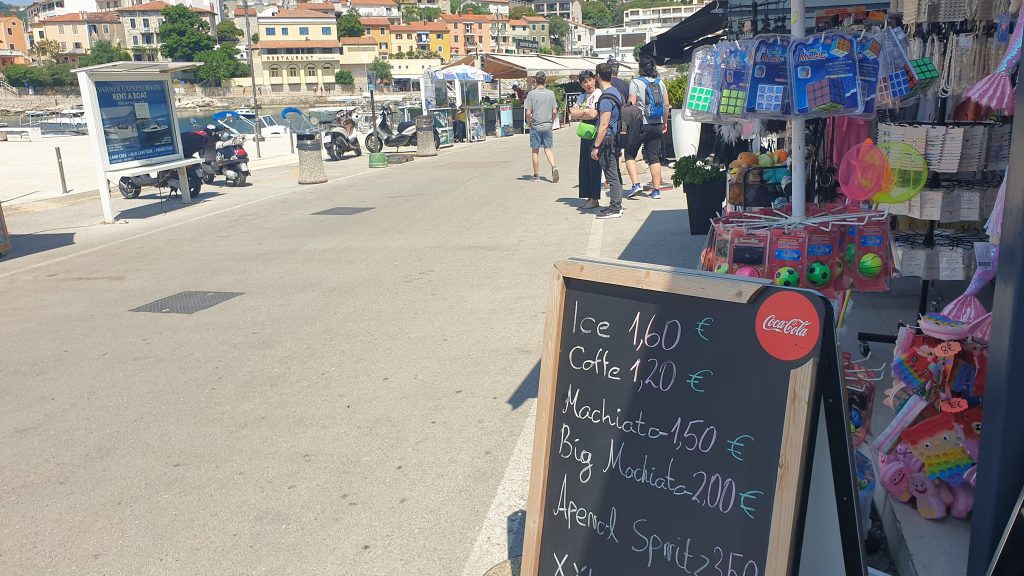
It was great to stroll along the riva, take in the sea breeze and enjoy the awesome views over a light lunch before heading back to Zagreb. And to reflect that, while the AIT Tour had been phenomenal in every respect, perhaps the best had been left for last in the less fashionable eastern Croatia. Labin and Rabac, I will be back.
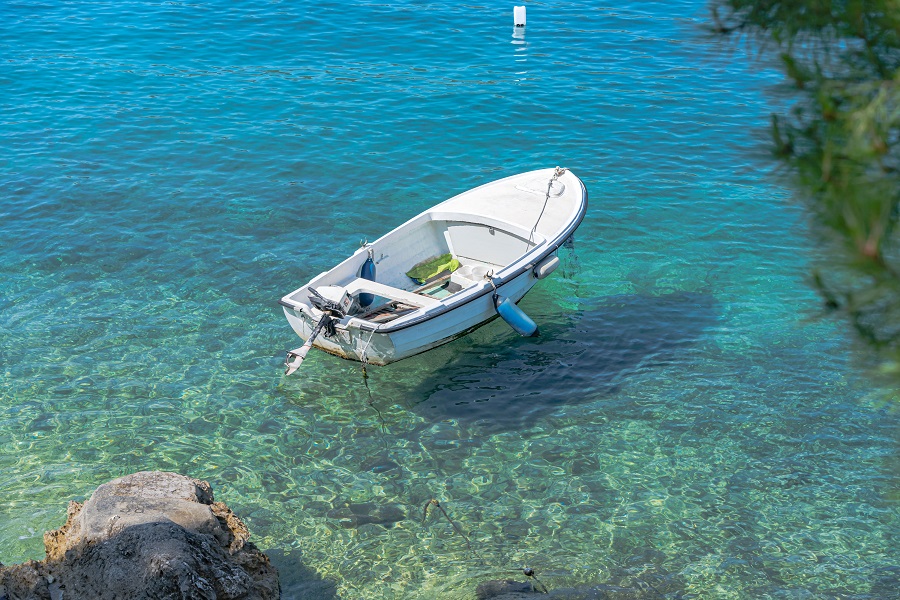
Read more about our trip in Inland Istria: Croatian Tourism’s Greatest Success Story.
Alternatively, here are 25 reasons you should never visit Istria.

